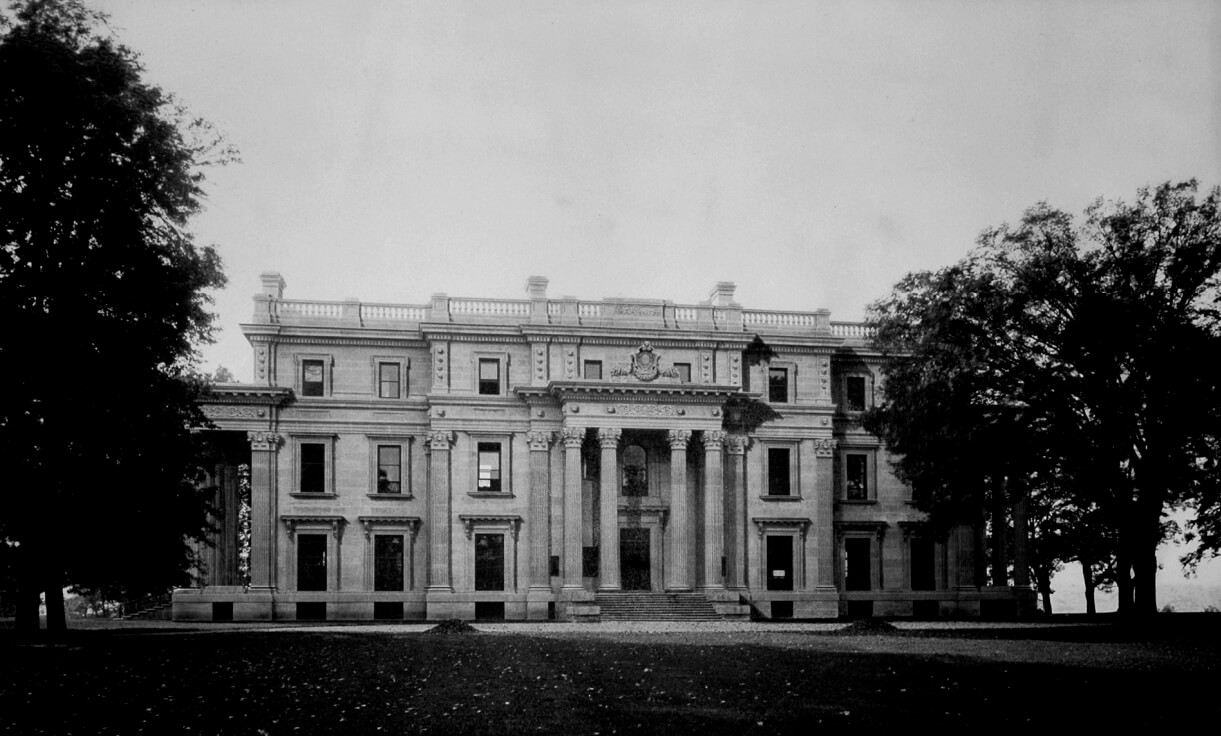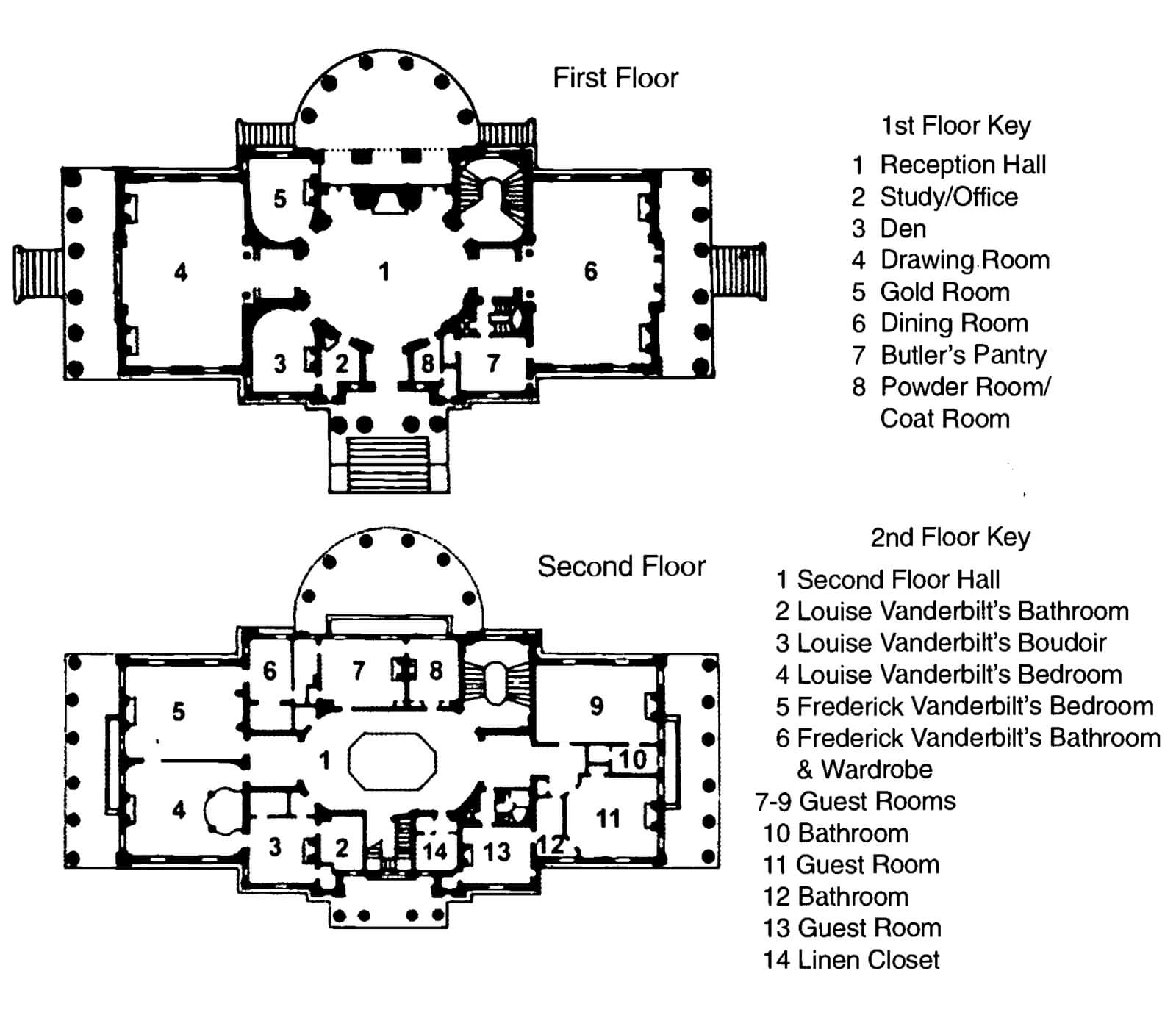Visit a Modest Little Hudson Valley Beaux-Arts Palace Built for a Vanderbilt
It may be hard to imagine when gazing up at this palatial Beaux-Arts pile in the Hudson River Valley, but it is actually considered one of the more modest of the many 19th century homes constructed by Vanderbilt descendants.

It may be hard to imagine when gazing up at this palatial Beaux-Arts pile in the Hudson River Valley, but it is actually considered one of the more modest of the many 19th century homes constructed by Vanderbilt descendants. The Vanderbilt Mansion, originally known as Hyde Park (not to be confused with Franklin D. Roosevelt’s home nearby), was constructed between 1896 and 1899 as the country estate of Frederick and Louise Vanderbilt.
Frederick was the grandson of Commodore Vanderbilt and he was one of a number of third generation Vanderbilts who went on Gilded Age building sprees, hiring noted architects to design townhouses, country estates and “cottages.” One of Frederick’s siblings built the grand Biltmore Estate in North Carolina and another built the lavish Marble House in Newport, R.I., both also now open to the public.
[instagram_embedding url=”https://www.instagram.com/p/BMxSC3ahY47/”]
Frederick and Louise owned a townhouse in Manhattan and a cottage in Newport but decided to add a country retreat to their holdings. In 1895, they purchased the former Langdon estate in the Hudson River Valley, bringing their relatively “new” money into an area dense with old New York families like the Livingstons and Beekmans.
[instagram_embedding url = “https://www.instagram.com/p/BNsH2IXjph_/”]
The couple hired McKim, Mead & White to renovate the existing Greek Revival-style house but the architects advised their clients to demolish the old house and start from scratch. While plans were being drawn up for the main house, a temporary home was quickly constructed for the couple. Known as the Pavilion, it was completed with just a few months of construction in 1895.

Several years later, the 54-room main house was ready. Frederick and Louise normally spent spring and fall at the estate, and the house was designed with multiple guest rooms and grand entertaining spaces, ideal for hosting small groups of guests for country house weekends.

The imposing Corinthian columned entry faced the landscape; the reception, living and dining rooms on the main floor provided sweeping views of the Hudson River. One can imagine properly attired guests gliding from the public rooms and out onto the rear terrace.
[instagram_embedding url = “https://www.instagram.com/p/BDkG4NLqR-1/”]
A historic study of the house by the National Park Service describes the interiors as “formal and grand without being overwhelming” but that seems like a bit of an understatement when wandering through the ornate spaces. Layered with tapestries, rugs, furniture, sculpture and chandeliers — much of it gathered from Europe — the house still feels rather grand to the contemporary visitor.
[instagram_embedding url=”https://www.instagram.com/p/BP3den1l2G2/”]
In addition to the main house and the Pavilion, the property included a coach house, two bridges, a gardener’s cottage, a farm and formal gardens.
[instagram_embedding url=”https://www.instagram.com/p/BKL-JmJAGen/”]
The mansion stayed a private family home until Frederick’s death in 1938. A niece inherited the property and was unsuccessful in her attempts sell off the estate. In 1940, President Roosevelt arranged for the house and a portion of the acreage to be acquired by the National Park Service. The house opened to the public the same year and the site is now operated as the Vanderbilt Mansion National Historic Site.
[instagram_embedding url = “https://www.instagram.com/p/BL7325WhJWw/”]
The Pavilion now serves as a visitor’s center, complete with gift shop, temporary exhibits and ticket sales for the guided tours of the house. Hour-long tours of the house are led by rangers who provide an overview of the social and architectural history of the estate while allowing visitors time to linger and admire the many rooms. Tours explore the first and second floors and take a brief stop in the servant’s domain in the basement.
How to Visit
Address: 119 Vanderbilt Park Road Hyde Park, N.Y.
Hours: The grounds are open seven days a week from dawn to dusk year round; the house is accessible by guided tour only. Tour times vary seasonally. Stop by the Visitor Center between 9 a.m. and 5 p.m. to sign up for one.
Admission: Free access to the grounds. House tours are $10, children 15 and under are free.
Directions: Take MetroNorth or Amtrak to Poughkeepsie, then a taxi (about a 20 minute drive). By car, Vanderbilt Mansion is about 2.5 hours from Brooklyn via the Taconic State Parkway.
Related Stories
- Persian Fantasy Meets Hudson River School at 19th Century Painter’s Dream Home
- This Dramatic Gothic Castle Was the Hudson River Valley Retreat of a Gilded Age Titan
- The Crumbling Castle of a Brooklyn Entrepreneur
Email tips@brownstoner.com with further comments, questions or tips. Follow Brownstoner on Twitter and Instagram, and like us on Facebook.





What's Your Take? Leave a Comment